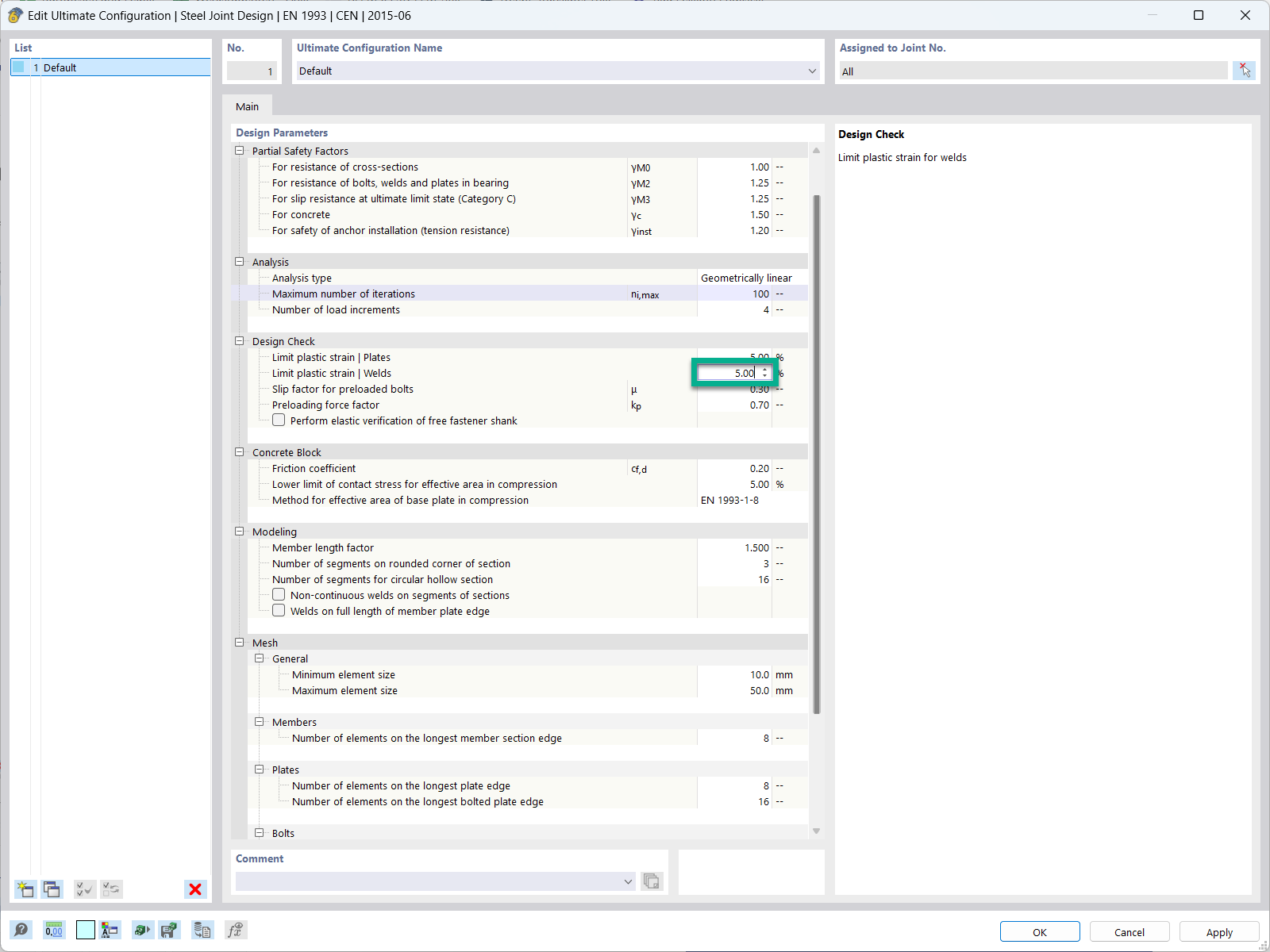Question:
In the RF‑/STEEL EC3 add-on module, I obtain an extremely high design ratio for a member in the case of "Biaxial bending, shear and axial force". Although the axial force is relatively high, the design ratio seems unrealistic. Why?
Answer:
According to DIN EN 1993‑1‑1, Section 6.2.9, the moment resistance is reduced due to a high axial force utilization; thus, the maximum design ratio for the cross-section design "biaxial bending, shear and axial force according to 6.2.10 and 6.2.9" is unusually high.
By using Equation (6.2) from Section 6.2.1 for the cross-section design instead of Equation (6.41) from Section 6.2.9.1, the design ratio can be reduced significantly.
|
NEd |
Bemessungswert der vorhandenen Normalkraft |
|
NRd |
Bemessungswert der zulässigen Normalkraft |
|
My,Ed |
Bemessungswert des vorhandenen Biegemomentes um die lokale y-Achse |
|
My,Rd |
Bemessungswert des zulässigen Biegemomentes um die lokale y-Achse |
|
Mz,Ed |
Bemessungswert des vorhandenen Biegemomentes um die lokale z-Achse |
|
Mz,Rd |
Bemessungswert des zulässigen Biegemomentes um die lokale z-Achse |
In the RF‑/STEEL EC3 add-on module, you can activate the linear interaction of the axial force and moment loading in the Details tab; see the image.

















.png?mw=350&hash=956e822acb3dcc3352bf4cb084bd75ac7c47685f)




























_1.jpg?mw=350&hash=ab2086621f4e50c8c8fb8f3c211a22bc246e0552)




-querkraft-hertha-hurnaus.jpg?mw=350&hash=3306957537863c7a7dc17160e2ced5806b35a7fb)


.png?mw=600&hash=49b6a289915d28aa461360f7308b092631b1446e)










